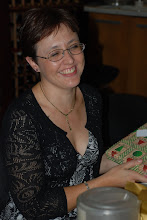Henna has been used throughout the Middle East for centuries to decorate and beautify women, particularly their hands, feet and hair. I’ve been fascinated by the beauty of the designs since I arrived in the UAE.
During my parents recent tour of Abu Dhabi we visited the Women’s Handicrafts Centre. There are henna artists based at the Centre, and with a great deal of excitement, I had my hand “painted.”
The paste is made from the dried leaves of henna plant (Lawsonia Inermis) which are ground to a fine powder and mixed with water and other ingredients. Henna powder can be mixed with a variety of things - lemons, limes, black tea, coffee, rose petals, orange blossoms, essential oils, cloves, pomegranates, tamarind, okra, and sugar. Traditionally, ingredients such as lye, urea, yak or camel urine may be added to deepen the colour.
Fortunately for me, henna is most often mixed with water, lemon juice, tea or coffee these days, along with essential oils!
Once the mixture has reached the desired consistency, it is placed in what looks like a piping bag and squeezed gently on to your hand in delicate, intricate patterns.
The pattern the henna artist chose for me was a fairly simple one of vines, flowers and leaves, covering only part of my hand. It took only a few minutes for the skilled artist to complete her design. She never wavered or splashed. Her moves were decisive and skilled as she drew on the pattern with the paste.
Designs vary from region to region. According to my reading, the varying designs often mean different things to different cultures.
Arabic designs are generally large, floral patterns on the hands and feet. Indians traditionally use fine thin lines for lacy, floral, and paisley patterns which cover their entire hands, forearms, feet and shins. Africans and Native/South American Indians tend to prefer bold, large geometric designs.
The paste felt cool as it lay on my skin. Initially the paste is black in colour, but as it dries, it becomes lighter in colour. It is painless, but as it dries it tingles somewhat!
The longer the paste is left on the hand, the darker the stain, and the longer it is likely to last.
The paste dried on my skin, and after about 2-3 hours it started flaking off, leaving behind an orange stain. Over the next 48 hours the orange darkens to become brown, and gradually begins to fade over the next week or so.
In some regions, the henna paste designs are covered for up to 6 hours and are kept warm. This apparently also aids in keeping the design on your skin for much longer.
I was delighted with the results, and every time I look at my hand I smile! It really does look pretty and feminine, and I think I will do this again!
My elation led me to read up on the subject, and I found out that henna has other properties, other than as a skin and hair dye. Henna has been found by modern scientists to be antibacterial, anti-fungal, and anti-hemorrhagic. Henna is useful is healing athlete's foot, fungal skin infections, and local inflammation. The leaves and seeds of the plant possess medicinal properties. They both act as cooling agents for the head and body. Henna is applied to burns and scrapes and is often used to treat heat exhaustion and to bring down the fever of a sick person. Henna provides a complete sunblock.
With these additional properties, it is no wonder that the Prophet Mohammed supported the use of henna as a medical aid, and as a method of beautifying women’s hands and feet.
In the UAE, henna is often reserved for special occasions, especially weddings. In preparation for her wedding, the bride is anointed with all sorts of traditional oils and perfumes from head to toe. Her body is rubbed with cleansing and conditioning oils and creams. Her hands and feet are decorated with henna and the hair is washed with extracts of amber and jasmine. She is fed only the best foods and her girlfriends prepare the best dishes which they share with her. Fine pieces of jewellery, perfumes, silk materials and other items are presented to her by the groom, from which she creates her elaborate trousseau called ‘Addahbia.’
The night before the wedding is the ‘Night of Henna’ or ‘Laylat Al Henna.’ The henna night is a time for all the bride’s sisters, female family members, and girlfriends to get together and celebrate the occasion. All female family members and guests also decorate their hands with henna.
Henna parties are also held during the year, especially around the time of religious festivals. Apart from the opportunity to have the henna designs done, it also provides the opportunity to sit, chat and relax. An Arabian-style “girls night out” if you will!
I know the room in which we had our henna designs done was filled with ladies chatting and laughing. I definitely think I could do this more often!
Subscribe to:
Post Comments (Atom)

No comments:
Post a Comment